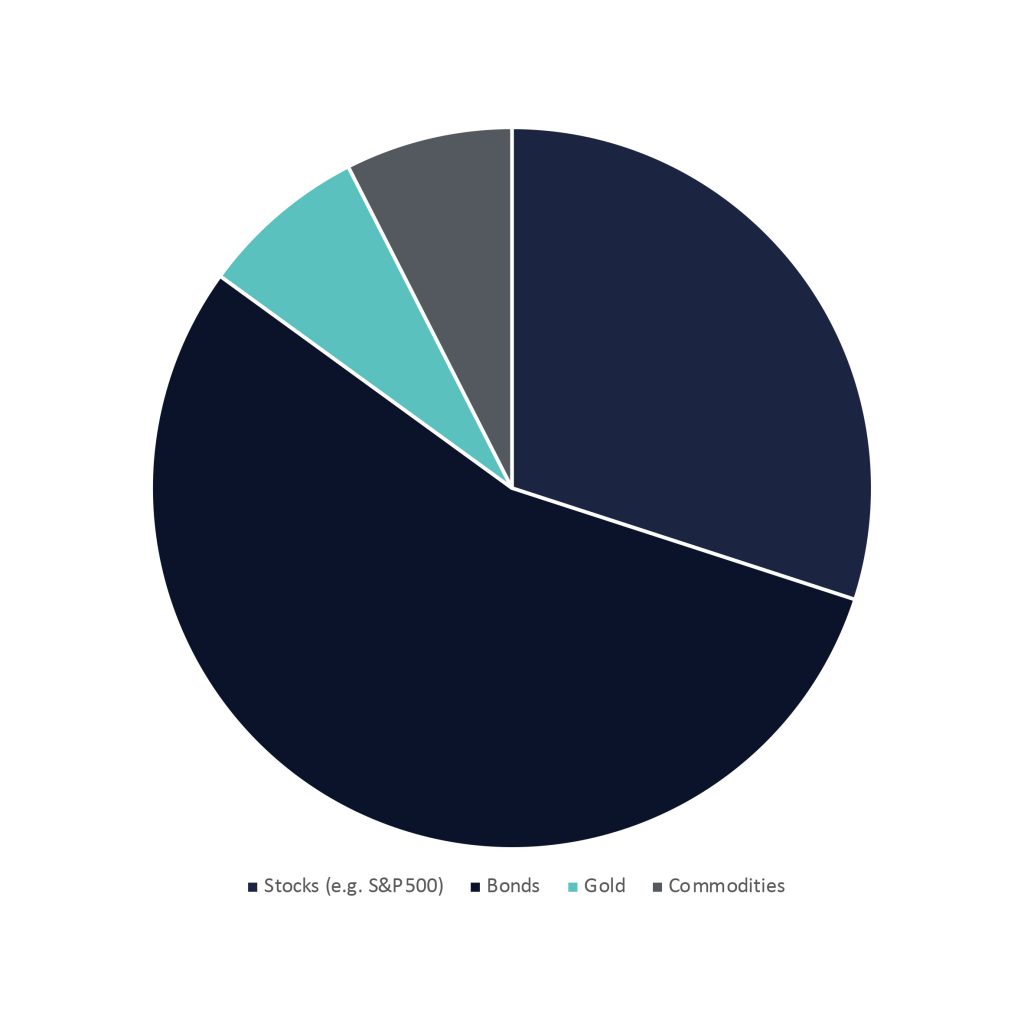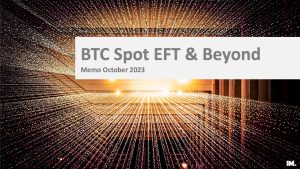What is the All Seasons Investment Portfolio?
So what exactly is an investment portfolio for all seasons? The All Season Portfolio, or also called the “All Weathers”, is the long-term investment strategy designed by the greatest investor of modern times: Ray Dalio at Bridgewater Associates. You can find his life and investment philosophy in his book Principles. Ray Dalio was actually to first one to use this investment strategy. Nowadays, in the investment jargon, investors call it risk-parity investing.
Why is this portfolio so interesting?
The idea behind the All Weathers is based on three elements:
- balanced on risk,
- minimum transactions per year,
- long-term growth.
What Assets Are in My Investment Portfolio?
A risk-balanced investment portfolio is a mix of financial assets that are balanced based on their level of risk. Here’s how an initial risk-balanced portfolio looks like if we only consider stocks, bonds, commodities and gold.
- About half of your portfolio is in bonds (a mix of long-and medium-term).
- About 30% is on index funds.
- The rest is divided between commodities and gold.

How to Manage your Portfolio
You can manage this portfolio is basically two ways:
- passively – as in you put it together once, and keep funding it regularly (for example, monthly),
- actively – you start understanding macroeconomic trends well enough to be able to adjust the portfolio based on some high-level metrics like interest rates, inflation etc.
The passive management is a more laid back way to management of your portfolio. Here you would adjust the starting percentages 1 to 2 times a year together with your financial advisor. The passive management may be a great way to go if you are not planning to be put in too much work in your portfolio. It gives you modest returns and lower transaction fees! By reducing the number and frequency of transactions, you are reducing the amount of fees that are taking a bite at your profits on the long run!
When you are not updating your portfolio, just forget about it! This portfolio is for the long-term which requires a solid emotional stability to be able to deal with whatever is happening to the market at any given moment.
An active management of this portfolio requires more work on your side.
Relevant Macroeconomic Trends
Understanding the macroeconomic trends, means you need to study the world politics a bit closer with particular focus on the policies. Important players to keep an eye on are central banks, since they have the control on the interest rates, and the amount of money in circulation in the economy. In general, understanding macroeconomic trends means understanding:
- credit,
- debit,
- interest rates, and
- inflation.
Why is all this important?
Let me give you a few high-level examples.
In periods when the interest rates are low (that is, approaching zero), credit is easily available. With credit being easily available, more money is circulating in the economy (that is, higher inflation). Since one people’s spendings are another’s income, the economy rises and markets get more speculative creating the famous bubble. In such periods, stocks tend to perform better than bonds and commodities. If you are able to understand macroeconomics, and the relationship between credit and debit, you may adjust your portfolio accordingly for higher returns.
If you got lost in this last part on the macroeconomics, don’t worry. There’s an article 100% dedicated to this topic based on Ray Dalio’s 30 minutes insightful video on How the Economic Machine Works. I’m attaching the video here, if you are interested to dig deeper on this.
Newsletter
Stay up-to-date with the latest developments in the stock and crypto market., fund, and crypto market.
Disclosure
These are unqualified opinions, and this newsletter, is meant for informational purposes only. It is not meant to serve as investment advice. Please consult with your investment, tax, or legal advisor, and do your own research.




No comment yet, add your voice below!